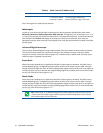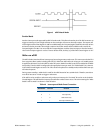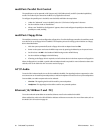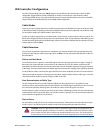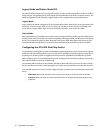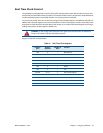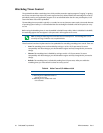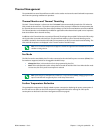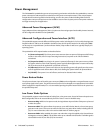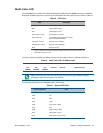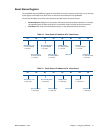66 CMX58886CX cpuModule BDM-610000050 Rev A
Power Management
The CMX58886CX cpuModule supports various powering mechanisms which allow the cpuModule to monitor
power consumption and temperature, and achieve minial power consumption states. These unique features
include thermal monitoring and thermal throttling, as well as low power modes including APM and ACPI
configurations. Various wake options are also available to resume normal system power when power modes are
no longer necessary for the application.
Advanced Power Management (APM)
Legacy Advanced Power Management (APM 1.2) options such as setting suspend and standby timeout intervals,
can be configured in the BIOS on the cpuModule.
Advanced Configuration and Power Interface (ACPI)
The cpuModule supports several different ACPI low power modes, including the S1, S3, S4, and S5 sleeping states.
Suspend modes S1 and S3 can be enabled in the BIOS, where the soft power button on the utility port (CN5)
can be setup as a suspend button (see Power Button Modes). Sleep modes S4 and S5 are typically setup by the
operating system.
The cpuModule’s ACPI suspend modes are described below
• S1 (Power on Suspend): The S1 low power state consumes the most power of all supported ACPI sleep
modes. In this mode, the CPU stops executing instructions, but power to the CPU and RAM is
maintained.
• S3 (Suspend to RAM): Everything in the system is powered off except for the system memory. When
the system wakes from this mode, operating systems typically allow applications to resume where they
left off, as the state of the application is preserved in memory.
• S4 (Hibernate): When the system enters this state, the operating system will typically save the current
state of applications and relevent data to disk, thus allowing the system RAM to be powered down.
• S5 (Soft-Off): The system is in a soft off state, and must be rebooted when it wakes.
Power Button Modes
The soft power button input of the utility port connector (CN5) can be configured as a suspend button to send
a soft power signal to the system. The power buttons function can be changed to a suspend button in the BIOS.
When configured in suspend mode, if S1 or S3 are enabled, pressing the power button will force the system into
the specified sleep state.
Low-Power Wake Options
The cpuModule supports several methods of waking from a low power state. Several of these wake options are
BIOS configurable, and can be accessed directly from the “Power” menu in the BIOS setup:
• Resume on Ring: While in a low power mode, the ring indicator input of either COM port may be used
to wake the system.
• Resume on aDIO: This option allows the system to use an aDIO Strobe, Match, or Event interrupt to
generate a wake event. This event can wake the CPU from any power-down mode, including Soft-Off
(S5). For more information, refer to the section titled Wake-on-aDIO on page 59.
• Resume on PME#: When enabled, the system can wake when a signal is applied to the External Power
Managment connector (CN12). This includes wake-up on onboard LAN controller. The PME# signal is
also available on the PC/104-Plus (PCI) bus connector.



